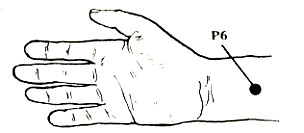Diet Soda Dangers, Natural Remedies for Nausea, & Treating Seasonal Allergies: News Bulletin for July 12, 2013
Diet Soda Will Make You Sick, Fat and Ugly!
 A shocking study released this week by Purdue University researchers has blanketed the web and television news outlets all over the country. If you haven’t heard already, the big fuss is about so-called “diet” low-calorie sodas. Millions of Americans guzzle these “diet” beverages daily in an effort to thwart weight loss. But, the study reveals that diet soda drinkers tend to pack on more pounds than those who don’t drink it. USA Today reports, “Diet soda may not be the panacea for weight loss that we all thought!” And, the artificial sweeteners in diet sodas actually leave a person craving more sweets. Simply put: Drinking diet soda slows down your metabolism, makes you fat, and leads to health problems such as diabetes and heart disease.
A shocking study released this week by Purdue University researchers has blanketed the web and television news outlets all over the country. If you haven’t heard already, the big fuss is about so-called “diet” low-calorie sodas. Millions of Americans guzzle these “diet” beverages daily in an effort to thwart weight loss. But, the study reveals that diet soda drinkers tend to pack on more pounds than those who don’t drink it. USA Today reports, “Diet soda may not be the panacea for weight loss that we all thought!” And, the artificial sweeteners in diet sodas actually leave a person craving more sweets. Simply put: Drinking diet soda slows down your metabolism, makes you fat, and leads to health problems such as diabetes and heart disease.
And, that’s not all! On May 29, 2013, CBS News reported that diet soda erodes teeth as much as meth and crack cocaine:
A report, published in General Dentistry on May 28th, shows an addiction to soda may do as much major damage to your smile as a drug habit, and sugar isn’t even the culprit…. Citric acid is found in both regular and diet soda. The ingredients used to make methamphetamine are highly corrosive, and crack cocaine has is highly acidic as well… The striking similarities found in this study should be a wake-up call to consumers who think that soda — even diet soda — is not harmful.
Of course, the diet soda dangers are nothing new. We’ve reported in several past articles here on Natural Health Advisory just how bad these so-called “diet” beverages are:
- Diet Soda Dangers: Could Depression Really Be the End Result?
- 5 Worse Drinks for Your Body
- What Does Soda (and Diet Soda) Do to Your Body?
The bottom line is: If you want to gain weight, have rotten teeth, become depressed and develop a chronic illness like diabetes or heart disease, keep gulping the “diet” sodas! But, if you’re ready to ditch the diet soda habit, here’s how to do it: How to Quit Drinking Sodas.
My Natural Treatments and Remedies for Stopping Nausea
by Tom P. Vick, Executive Editor and CEO
Dr. David Williams has been traveling the globe in search nature’s health remedies for almost three decades so he certainly should know a thing or two about the best therapies for nausea and motion sickness. Dr. Williams is a researcher whose exclusive remedies, even those uncovered in the African Bush or Australian Outback, are often years ahead of those found in conventional medicine. He writes a monthly newsletter and often blogs on natural healing. A recent blog reported his top three recommendations for stopping nausea. Here they are:
 1. P6 Acupressure Point – this research backed remedy sounds farfetched but has been found effective for many different kinds of nausea – vomiting resulting from morning sickness, motion sickness, postoperative sickness, and chemotherapy. You should massage this acupressure point located two finger-widths below the wrist with constant pressure in intervals of three to five minutes, as often as needed for stopping nausea.
1. P6 Acupressure Point – this research backed remedy sounds farfetched but has been found effective for many different kinds of nausea – vomiting resulting from morning sickness, motion sickness, postoperative sickness, and chemotherapy. You should massage this acupressure point located two finger-widths below the wrist with constant pressure in intervals of three to five minutes, as often as needed for stopping nausea.
2. Ginger – this is a time tested natural nausea relief therapy. I remember taking my bottle of ginger on a cruise which turned out at one point to be rather bumpy and before too long people were coming up to me with their hand out so I could give them another couple capsules of ginger. Dr. Williams reports this remedy is safe and effective for the morning sickness nausea associated with pregnancy. For stopping nausea, the generally recommended dosage has been 500 to 600 mg every three to four hours.
3. Deep Breathing – this one is so easy to do anyplace and anytime so it is worth remembering. A research group was studying the effects of aromatherapy on nausea so they gave one group gauze pads wet with rubbing alcohol (isopropyl alcohol), another group pads with oil of peppermint, and a third with pads dampened with a placebo saline solution. Each was told to inhale the aroma slowly through their nose and then exhale slowly through their mouth a total of three times. And guess what- all three groups after just five minutes reported at least 50 percent improvement and had an overall satisfaction rating of the treatment of 87 percent. Obviously, the nausea relief came from the slow, deep breathing techniques rather than any aroma placed on the gauze pads. And you can get the same relief as well through deep breathing.
Natural Treatments for Seasonal Allergies
If you suffer with seasonal allergies, you know how annoying it can be! While most people look forward to spending time outdoors in the sunshine and fresh air, the seasonal allergy sufferer dreads it. Sneezing, itching, watery eyes… it’s no picnic in the park!
Fortunately, there are plenty of safe, natural treatments for seasonal allergies:
1. Local Honey
Women’s Day explains why eating a daily drop of “local” honey is one of the most effective natural remedies for seasonal allergies. Why? Bees who feed on local pollen from local plants produce local honey. Therefore, local honey contains tiny amounts of the plant allergens. And, eating small amounts of local honey regularly can help your immune system produce antibodies to the pollen, often the very thing that triggers seasonal allergy symptoms. This method works similarly to allergy shots. Allergy shots contain the exact ingredient that a person is allergic to. When these allergens are administered, the body treats the allergen like a vaccine, and infection-fighting antibodies are created. Thus, eating small amounts of honey is like taking “mini allergy shots”.
2. Chamomile Tea Bags
NaturalNews.com reports on a variety of effective herbal remedies for allergies: Garlic, cayenne pepper, thyme, and elderberries. But, the most impressive herbal remedy is chamomile. Not only can this be prepared as a delicious tea, but placing the actual cold chamomile tea bags on your eyes for 5 to 10 minutes can help soothe unpleasant allergy symptoms such as eye puffiness, redness and itching.
3. Stinging Nettle Leaf
The botanical, stinging nettle (Urtica dioica), has a long medicinal history with a wide-range of uses: treats urinary problems, relieves arthritic joints, eases digestive pain, and more. But, one benefit of the stinging nettle is not so commonly known – the leaf of the plant is a powerful anti-histamine, and works especially well for hay fever symptoms. ChiroEco.com explains that you should take stinging nettle leaf when you first begin experiencing allergy symptoms.
When purchasing stinging nettle, be sure to buy dried leaves or freeze-dried leaves and not the plant roots as the leaves of the plant contain the natural anti-histamine. To prepare stinging nettle leaf, boil water and pour it over the herb in a cup or pot. Steep for 5 minutes; then strain and drink. For added allergy relief, try chamomile in your nettle leaf tea.
*Pregnant women and children should not use stinging nettle leaf.


 What Are Sulfites and Are They Bad for You?
What Are Sulfites and Are They Bad for You?  Sesame Allergy: The 9th Most Common Food Allergy
Sesame Allergy: The 9th Most Common Food Allergy  Lupin Allergy: Are You At Risk?
Lupin Allergy: Are You At Risk? 